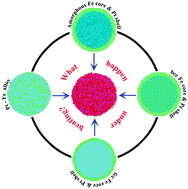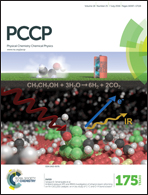Atomic structure and thermal stability of Pt–Fe bimetallic nanoparticles: from alloy to core/shell architectures
Abstract
Bimetallic nanoparticles comprising noble metal and non-noble metal have attracted intense interest over the past few decades due to their low cost and significantly enhanced catalytic performances. In this article, we have explored the atomic structure and thermal stability of Pt–Fe alloy and core–shell nanoparticles by molecular dynamics simulations. In Fe-core/Pt-shell nanoparticles, Fe with three different structures, i.e., body-centered cubic (bcc), face-centered cubic (fcc), and amorphous phases, has been considered. Our results show that Pt–Fe alloy is the most stable configuration among the four types of bimetallic nanoparticles. It has been discovered that the amorphous Fe cannot stably exist in the core and preferentially transforms into the fcc phase. The phase transition from bcc to hexagonal close packed (hcp) has also been observed in bcc-Fe-core/Pt-shell nanoparticles. In contrast, Fe with the fcc structure is the most preferred as the core component. These findings are helpful for understanding the structure–property relationships of Pt–Fe bimetallic nanoparticles, and are also of significance to the synthesis and application of noble metal based nanoparticle catalysts.


 Please wait while we load your content...
Please wait while we load your content...